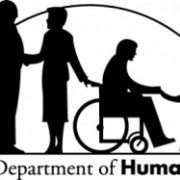Health Disparities & Social Determinants of Health (SDOH)
As patients enter the healthcare system, primary care is typically their first stop. Because of this, primary care clinicians have a unique opportunity to develop relationships with patients and communities. This also enables them to get a glimpse of the hardships that a particular patient or group of patients is dealing with and see how that can affect their overall well-being. As the healthcare system, and primary care in particular, shifts away from a transactional system, to one more focused on high quality, comprehensive care, these outside factors that often play a significant role in patients’ lives must be accounted for.
The CDC defines health disparities as preventable differences in the burden of disease, injury, violence or opportunities to achieve optimal health that are experienced by socially disadvantaged populations. It defines the social determinants of health as conditions in the places where people live, learn, work, and play. While several of these factors or locations fall out of the traditional sphere of primary care, a well-organized and coordinated primary care team should have the resources to help patients beyond their medical needs.
Resources

National Association of Medicaid Directors | June 2015

Minnesota Department of Human Resources | June 2015

Qualis Health | , National Interprofessional Initiative on Oral Health | June 2015

The Patient-Centered Medical Home's Impact on Cost and Quality: Annual Review of Evidence, 2013-2014
Patient-Centered Primary Care Collaborative | January 2015

Agency for Healthcare Research and Quality | May 2015

The Henry J. Kaiser Family Foundation | April 2015

National Center for IPE | March 2015
- ‹ previous
- 8 of 15
- next ›
News
June 3, 2021 | Kaiser Health News
April 29, 2021 | Primary Care Collaborative
April 12, 2021
- ‹ previous
- 8 of 47
- next ›
Events & Media
March 26, 2019 | IPFCC
- ‹ previous
- 8 of 20
- next ›
Related Content
Pages
Pages
Secondary menu
Copyright © 2024 Primary Care Collaborative










